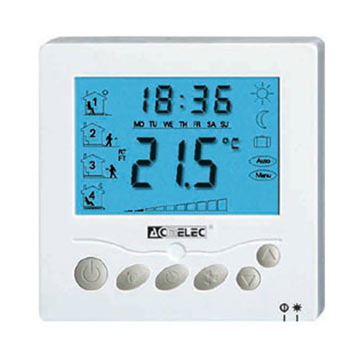
Programmable thermostats have taken the HVAC community by a storm with their ability to significantly reduce energy use when the air conditioning blower is not needed. The next big step in thermostat technology is zone control, where you can not only program the system to turn on and off, but you can set what areas turn on and off and what areas need what kind of ventilation. The technology basically breaks up the house into a bunch of independent interconnected units that each receive special attention from the thermostat.
Why this step has not been taken yet by most HVAC companies is a mystery to some professionals. On
Denver air conditioning services company employee explained it like this:
"We already turn off our lights when we leave the room and close the vents to unused rooms, so why cant we apply simple cost saving features to AC, which costs many times more than lighting?"
With computer technology, a simple thermostat makes zoning much more advanced than just on/off. HVAC zone technology can make significant changes to areas that were previously hot or cold spots. This allows a much smaller and more efficient exterior unit to evenly heat a building that would have previously cost much more.
The zone control technology is just as easy to install as traditional
Denver HVAC systems, but the number of manufacturers is still small. The two most popular brands right now for zone control are Arzel zone control and Bryant Evolution. One way these brands deliver energy saving is through longer cooling and heating cycles. Each time your unit cycles on and off there is a significant energy waste. The
compressor fan has to run at an increased speed to make up for the time it was off. Zone thermostat systems try and maintain a lower compressor speed, targeted at the houses needs for a longer time. Reduced cycling is also much better at maintaining consistent interior temperature.
For a new building, installing programmable zone thermostats does not require much different other than using new ducts. For retrofitting old units, your Denver HVAC company will have to install dampers inside the existing ducts. These dampers redirect airflow to parts of the building that are not used. The actual work required to install the dampers is not much harder than a routine duct cleaning.
The effectiveness of a these new technologies can be enhanced with new geothermal heat pump products. The evolution of combined ventilation technology has reduced the overall consumption of HVAC units in the US by more than half in the last 20 years, while improving comfort and air quality.





This comment has been removed by the author.
ReplyDeletevery well explained and you can use howtechnologywork.com/air conditionerswork this site as reference
ReplyDelete